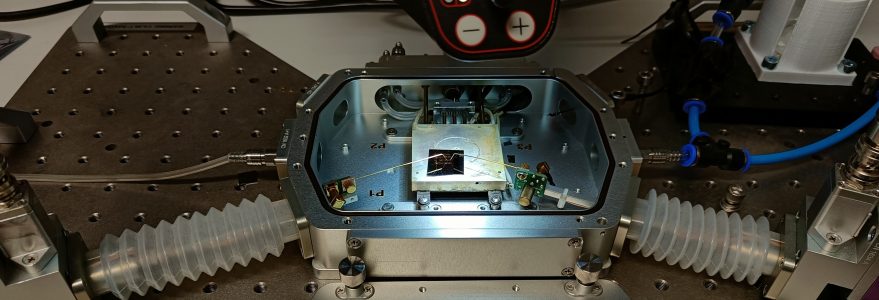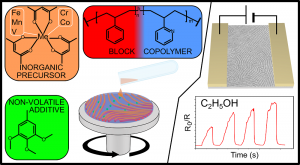Scientists from the University of Warsaw developed a new method for producing chemical sensors built from nanostructured transition metal oxides. The results of their research make a significant contribution in the field of nanomaterial synthesis and sensing technologies.
The researchers from the UW’s Faculties of Chemistry and Physics have proposed a one-step synthesis of nanowires (structures resembling human hair in appearance but with a diameter 1,000 times smaller) built from metal oxides. For this purpose, they used block copolymers that act as a “scaffold” forming the structure of the obtained nanomaterials.
This method simplifies the previously used multi-step process of obtaining such nanostructures. It involves a one-step self-organisation of the block copolymer in solution in the presence of inorganic salt directly during the deposition of the material on the substrate. This process allows for very rapid and efficient production of oxide coatings that consist of nanowires with a well-developed active surface, which is essential in, among others, sensor applications.
The results of the publication open up new possibilities for the production of miniaturised systems for use in industries related to the detection of volatile organic compounds (VOCs) polluting the air and in catalysis.
The article “Block Copolymer-Templated, Single-Step Synthesis of Transition Metal Oxide Nanostructures for Sensing Applications” by Przemysław Puła, a doctoral candidate in the research group of Prof. Paweł Majewski from the UW’s Faculty of Chemistry, and colleagues was published in the journal ACS Applied Materials & Interfaces.




